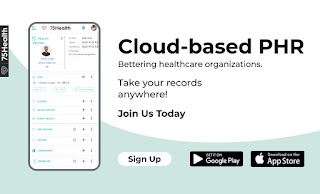Personal Health Records Software Scope and Functionalities
Recently, user-centric information technology is developing a lot in the healthcare industry such as Personal Health Records Software. It has multiple scopes and functionalities to be served for mankind so it creates a supporting platform with a new version for healthcare services. It empowers the patient to know their medical information any time anywhere. Communication between patient and provider is enabled through chat and email system so doubts on current medical treatment and alternative medicines can be discussed.
The technological evolution can
generate new sets of data by providing many opportunities to small and mid-level
clinics by reducing the overhead costs and increasing patient outcomes. Industry
Standards are maintained at the same time patient and doctors’ expectation on the
product is managed by healthcare IT companies. As the future belongs to people
who know to handle electronic data and cloud technology.
Function Overlap
The functionalities between Personal
Health Record and Electronic Health Record Software depend upon different implementation
types - stand-alone, and interconnected. The functions and features in PHR are
designed patient-centric and access is completely given to patients. Providers
have the least access in PHR and patient can schedule appointments, request for
prescription refilling, and encrypted messaging with family doctors and staff.
New Features
- Personal Health Records Software has witnessed new functionalities with clinical data like generating reports on patient outcomes, medical practitioner ratings, latest industry guidelines, and support social measures.
- The analytic techniques are used to detect patient outcomes with regular data inputs from home measuring instruments so the chronic disease patient can regulate blood pressure and sugar levels.
- The Healthcare industry is striving to make readily available healthcare data by analyzing quality and performance metrics. These analytics are more feasible when users have a better understanding of data content, formats, and new sources.
Data Progressing
- Advanced machine learning helps doctors and patients to learn a lot about the disease by monitoring the data, patient risk analysis, sudden symptoms, and ECG graphs. All these metrics lead to advanced healthcare outcomes and optimization in cost.
- The main concern today is user-related challenges like quality, and secured storage. It even processes patient data in large amounts to different information systems. A digital summary is maintained and made available to patients with a knowledge base for deeper understanding.
Personal
Health Records is read-only software for the patient, and the provider
holds the complete data maintenance and controls. Radiology interpretations can
be read through a password-protected patient portal. Some commercial features
for physicians are separate portals to claim bills, prescription data, lab
tests, and imaging studies on different patient sets.




Comments
Post a Comment